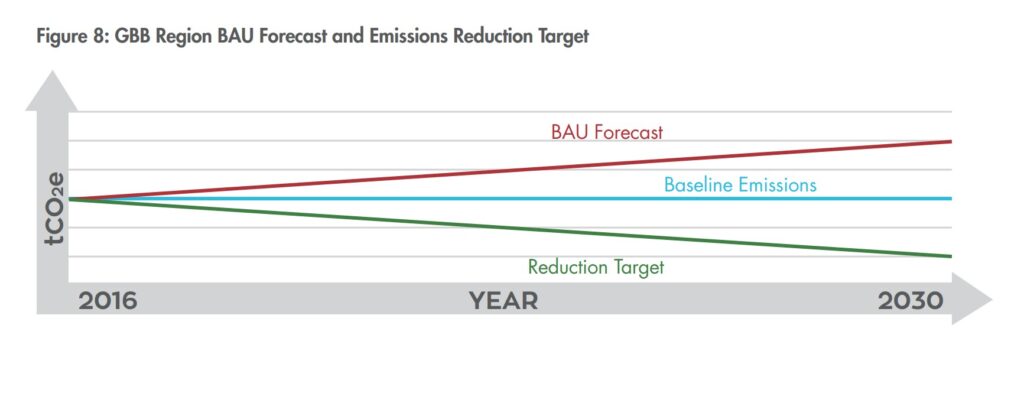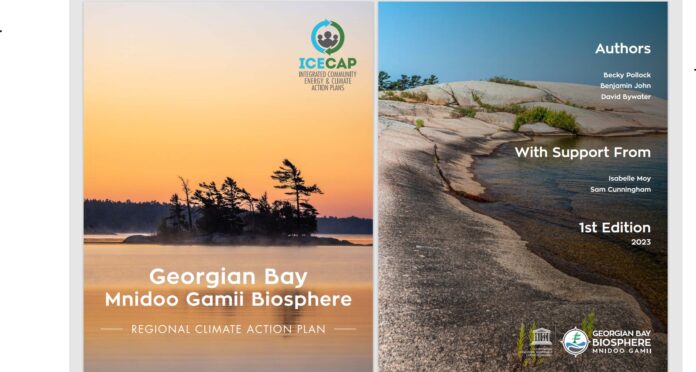Reduce greenhouse gas (GHG) emissions and the use of fossil fuels, improve energy efficiency, and adapt to a changing climate by building greater resilience.
Those are the four goals set by the Georgian Bay Biosphere’s (GBB) Regional Climate Action Plan (RCAP), released on Thursday (May 11).
According to the Biosphere, the purpose of the plan is to chart a course for a healthier, sustainable, and more livable future for the residents of the eastern Georgian Bay region, now and for generations to come.
The GBB says in Canada, local governments can influence or control nearly half of the nation’s GHG emissions. To that effort, the biosphere aims to reduce community GHG emissions by 6 per cent below 2016 levels by 2030. In addition, GBB officials say the region will also strive to reach net-zero emissions by 2050, in line with other municipalities and levels of government across Canada.

The plan sets out three main approaches that can be taken to reduce the region’s GHG emissions. which include, energy conservation and efficiency, fuel switching, and local renewable energy generation.
The plan comes with over a dozen objectives to implement all four goals stated above. The objectives cover the three main contributors to emissions in our region, buildings, transportation and waste.
Officials say buildings, residential, commercial, institutional and industrial, account for around 27 percent of GHG emissions in our region, with residential buildings contribute the most due to emissions coming from utilities to heat and cool the home.
The plan had the following five objectives with relation to buildings.
- Increase public education and awareness on building emissions and energy use.
- Integrate and increase the use of low-carbon building policies and planning practices.
- Increase energy efficiency retrofits in homes and businesses.
- Increase and promote the use of net-zero building practices for new buildings.
- Increase clean energy generation and energy management practices.
According to the biosphere, transportation is the largest contributor of GHG emissions in the GBB region, accounting for approximately 71 percent.
GBB officials say emissions from on-road transportation, which include gasoline and diesel used to fuel cars and trucks, contribute the most.
The biosphere says transportation represents a large portion of the region’s total emissions because residents and businesses live, work and play in a large geographic area which requires lengthy trips to local amenities.
On transportation, the plan had the following objectives.
- Improve public education and awareness regarding Active and Zero-Emission Transportation
- Develop and support municipal plans and policies that support zero-emissions transportation.
- Increase the use of Active Transportation.
- Increase the use of Zero Emission Transportation.
- Improve transportation efficiencies for goods and people.
And finally, GBB officials say waste is another major contributor to emissions, accounting for about three per cent of GHG emissions in the GBB region.
The biosphere says much of these emissions come from the breakdown of organic materials, like food scraps, paper, or yard waste, when they are left to decompose in a landfill.
The RCAP set out the following objective regarding waste.
- Improve public education and awareness regarding waste reduction options and impacts.
- Improve waste reduction strategies to reduce the volume of single use plastic waste produced.
- Improve waste diversion strategies to divert the volume of waste disposed at landfills.
- Improve regional diversion of organic waste, like green bin programs.
- Work with local business and industry to improve overall waste reduction.
The RCAP will be revised after 2030 to provide a more distinct pathway for achieving this target.
You can find the GBB’s full Action Plan here.


